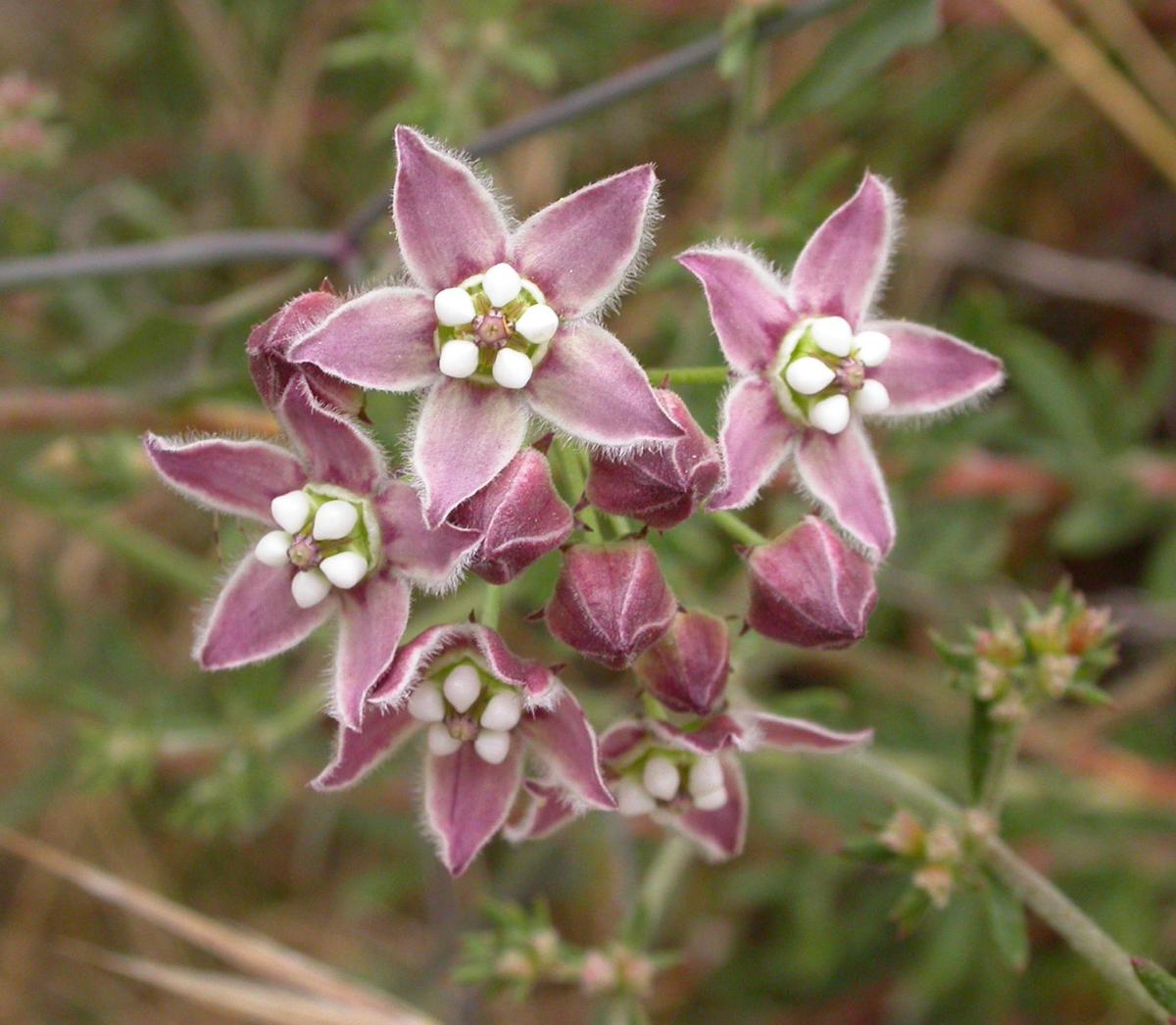Q: Can you tell me something about the weed called funastrum twine vine?
A: The plant in question is considered a weed to some and an ornamental plant to others. As we like to say, a weed is a plant out of place or a plant whose economic potential has yet to be realized. Funastrum cynanchoides, otherwise known as fringed twinevine, climbing milkweed vine, and twine-vine is in the Asclepiadaceae or milkweed family. It is a smooth vine with umbels of pale white, star-like flowers and long twining stems often clambering over tops of bushes. It has milky sap, hence the name, and is a food plant for caterpillars and several species of butterflies including monarchs and queens. There are several similar species in the Southwest, all hairy or downy and with foliage that smells somewhat like hot rubber. Its native distribution is Southern California east through southern Utah to Oklahoma and Texas, and south to Mexico. It’s native habitat is chaparral and brush country and open woodlands. It requires a moderate amount of water, part shade, and can survive in a variety of soil types.
Q: Any instructions for planting a bougainvillea in Green Valley? I will purchase a potted plant and put it in a hole in the ground.
A: Bougainvillea is a tough plant and digging a hole that is as deep, but not deeper than the roots in the container is the main thing. You can set the container in the hole once you think it is deep enough to make sure. The main things to watch out for when selecting a site are protection from the cold and proper irrigation. In Green Valley, there is a greater chance of frost damage, and this plant can die back to the ground. So choosing a site that is somewhat protected or close to hardscaping that can radiate heat is helpful. In extreme cold, you may have to cover it like we do with citrus. Also this plant doesn’t need much water but it does need some, especially to get established, so make sure there is a way to get drip irrigation or hand watering to the plant.
Q: I have an ant problem. I tried fire ant powder, carpenter ant powder, plastic black packs, and boric acid and now I put boric acid sugar in a jar with one fig and put it by the hole. The ants ate the soaked boric acid fig and I still see hundreds of them. How do I get rid of them? Are they beneficial to the environment? Also, these ants are everywhere in the neighborhood.
A: Those are harvester ants. They are harmless to you unless you disturb them and they could be left alone. Harvester ants disperse seed, increase permeability of soils and feed other organisms. Horned lizards (horned toads) rely on harvester ants for food that compose up to 90 percent of their diets. When harvester ants are found in your yard, it is up to you to decide whether or not they pose a risk. You should consider letting them be if they are in a quiet corner of your property. In the end, it would be hard to eradicate them since they are very common and likely have huge colonies under the soil.





